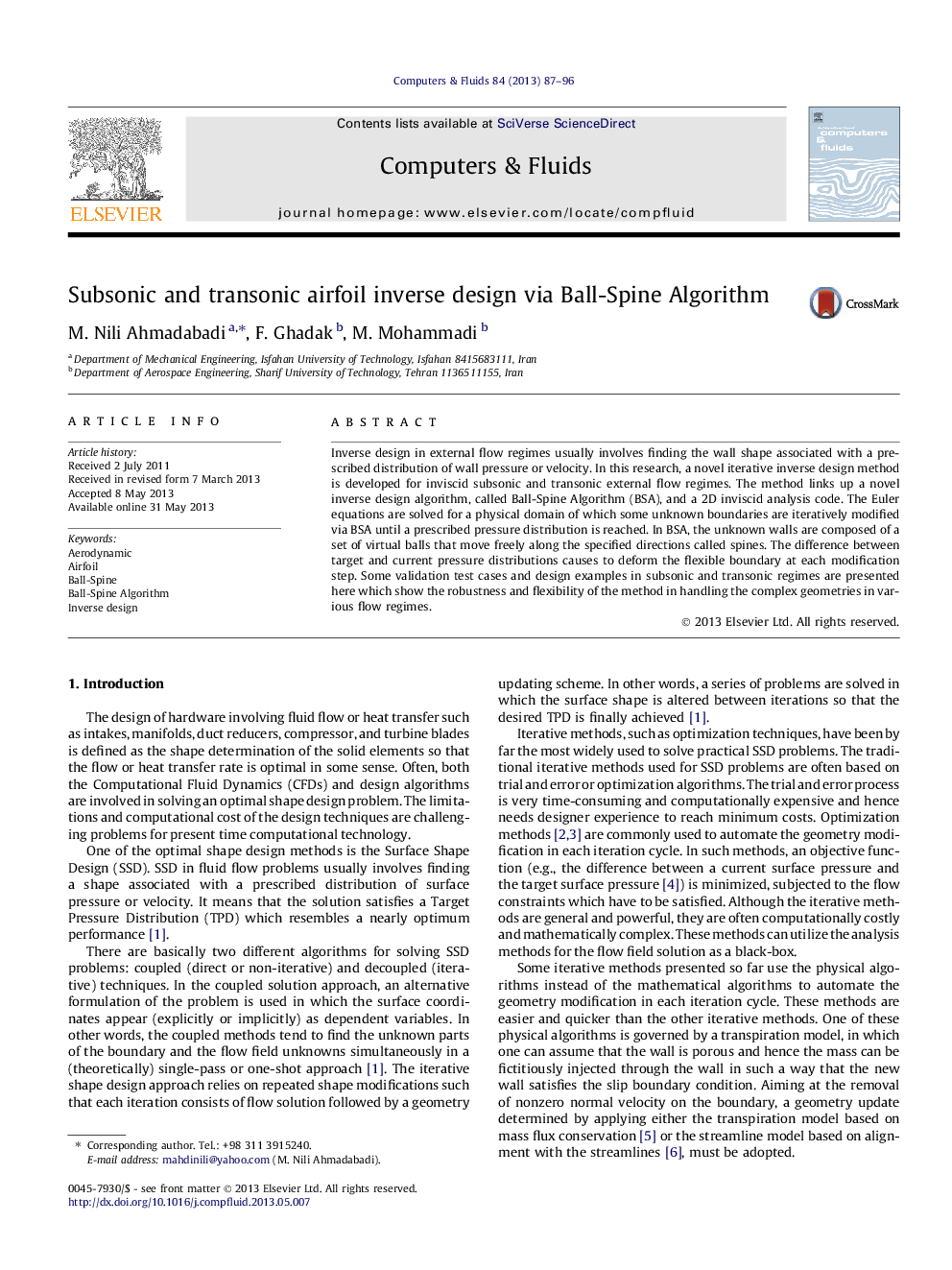| Article ID | Journal | Published Year | Pages | File Type |
|---|---|---|---|---|
| 768643 | Computers & Fluids | 2013 | 10 Pages |
•BSA is capable of aerodynamic design of subsonic and transonic airfoils.•BSA is consistent with C-type grid for airfoils.•BSA avoids oscillations in surface shape without adding some damping term.•BSA can be used for high attack angle without any limitation.•ONERA lift coefficient was improved by modifying wall pressure distribution.
Inverse design in external flow regimes usually involves finding the wall shape associated with a prescribed distribution of wall pressure or velocity. In this research, a novel iterative inverse design method is developed for inviscid subsonic and transonic external flow regimes. The method links up a novel inverse design algorithm, called Ball-Spine Algorithm (BSA), and a 2D inviscid analysis code. The Euler equations are solved for a physical domain of which some unknown boundaries are iteratively modified via BSA until a prescribed pressure distribution is reached. In BSA, the unknown walls are composed of a set of virtual balls that move freely along the specified directions called spines. The difference between target and current pressure distributions causes to deform the flexible boundary at each modification step. Some validation test cases and design examples in subsonic and transonic regimes are presented here which show the robustness and flexibility of the method in handling the complex geometries in various flow regimes.
